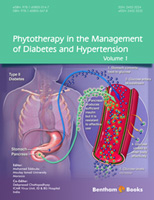Stroke is one of the most debilitating major noncommunicable diseases (NCDs). Increasing exposure to behavioural risk factors (tobacco use, unhealthy diet, physical inactivity and harmful use of alcohol) is intensifying the worldwide stroke and NCD burden. The burden of stroke is higher in low- and middle-income countries and, in particular, increasing in the younger age groups. Prevention and management of stroke have advanced a considerably over the last two decades. Scientific advances in the prevention and management of stroke have little value if they are not implemented worldwide. Implementation of new developments for the prevention and management of stroke depends on country resources and capacity that are closely linked to determinants of global health and development.
The world has reached a decisive point in recognizing the interdependence of global health and sustainable development. The agreed Sustainable Development Goals (SDGs), which replaced the Millennium Development Goals (MDGs) in 2015, can only be achieved with the absence of a high prevalence of debilitating diseases such as stroke and other NCDs. At the same time, actions to attain the Sustainable Development Goals can directly or indirectly contribute to reducing the stroke burden. The 17 Sustainable Development Goals relating to future international development include 169 targets to be attained by 2030. They cover a broad range of sustainable development issues, including NCDs. Furthermore, the world has also agreed on a time-bound set of nine voluntary global NCD prevention and control targets to be attained by 2025. The Sustainable Development Goals targets as well as the NCD targets are relevant to stroke. However, there is no clear agreement on who should do what to attain these ambitious targets at the country level. What is clear is that multiple actors in many sectors, including health, must work closely together to attain them.
This book is necessary because, at present, there is a serious disconnect between scientific progress in the field of stroke and implementation of these medical advances at the country level. The majority of countries do not adopt a sustainable public health approach to address stroke. A public health approach needs to combine prevention, treatment and monitoring components in order to tackle stroke in a cost effective and sustainable manner. Such an approach also needs to employ an integrated method to address stroke, recognizing that behavioural risk factors of stroke are also responsible for other major NCDs (heart disease, diabetes, chronic respiratory disease and cancer).
Stroke is the field of expertise of neurologists, but combating stroke is the business of everybody. The aim of this book is to introduce and increase the understanding of stroke as well as its links to the Sustainable Development Goals by decision-makers, policy-makers, lay people, journalists, public health practitioners, under-graduate and post-graduate students, and early career-level health professionals working in the fields of stroke, NCDs and development. All of them and others, have a role to play in prevention and control of stroke. A broader understanding of stroke by a wider audience can help to place stroke on the global development and health agenda and to strengthen country capacity to address stroke through a public health approach. There is a need for materials to help equip such interested parties to design, implement and evaluate strategies and programmes to address these diseases. The contents of this book are kept as simple as possible with this need in mind, particularly in the context of low- and middle-income countries.
This book is structured into eight chapters, each addressing key questions on various aspects of stroke. Chapter 1 covers causes, symptoms, signs and consequences of stroke. It has a different style and is much simpler, compared to other chapters, as the aim of this chapter is to introduce stroke to those who have very little knowledge of the condition. Chapter 2 sets out an initial understanding of the sociopolitical and global health landscape, including the competing interests that can render stroke prevention challenging to governments. Chapter 3 discusses stroke and the burden it presents to low-, middle- and high-income countries. It goes on to explore the risk factors and prevention strategies of stroke. Chapter 4 presents the medical and surgical interventions available for managing stroke. Chapter 5 provides an update on the care of stroke, including stroke units, new therapies and future advances. Chapter 6 discusses the links between stroke and the Sustainable Development Goals and is based on information and data obtained from various United Nations documents on Sustainable Development. Chapter 7 presents data on the staggering economic burden of stroke and draws attention to the scarcity of data from the developing world which bears the major share of the global stroke burden. Finally, Chapter 8 summarizes the key messages in simple language. There is some unavoidable overlap between the chapters. The content has been simplified, to the extent possible, to provide better insight and understanding of stroke, particularly to a non-expert audience. It is, therefore, a “must read” for all those interested in stroke and global health.
Dr. Shanthi Mendis
Geneva Learning Foundation,
Former Senior Adviser World Health Organization,
Geneva,
Switzerland




